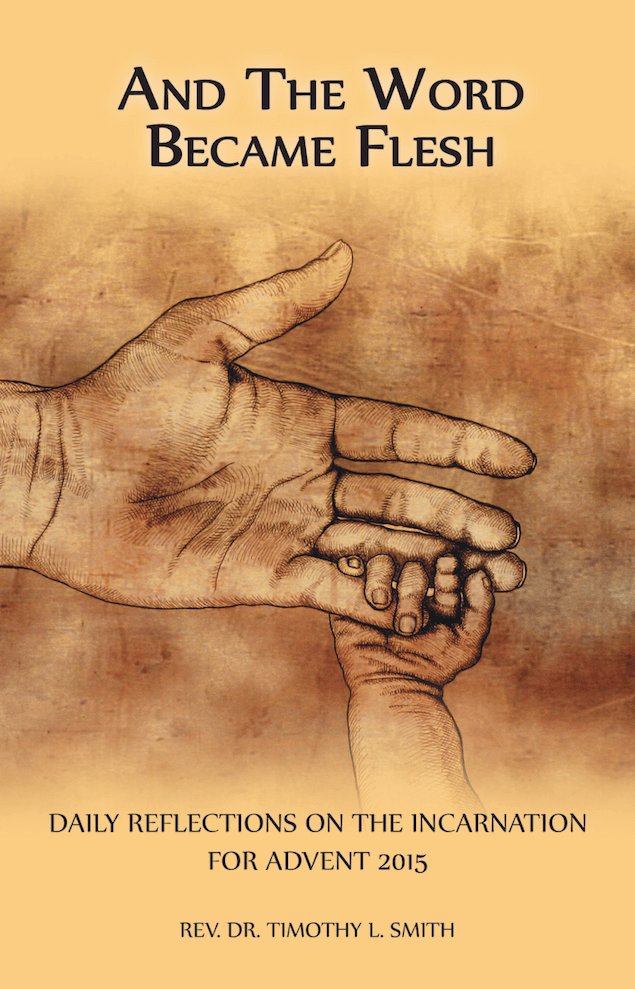The Second Sunday of Advent
Since, then, we have a great high priest who has passed through the heavens, Jesus, the Son of God, let us hold fast to our confession. For we do not have a high priest who is unable to sympathize with our weaknesses, but we have one who in every respect has been tested as we are, yet without sin. Let us therefore approach the throne of grace with boldness, so that we may receive mercy and find grace to help in time of need.
Hebrews 4:14-16
As a boy I gazed up each Sunday at a picture in front of our little church sanctuary. The picture is indelibly imprinted in my psyche. If a picture is worth a thousand words, I can’t imagine how many words were preached in all those Sundays. The picture was a reproduction of Heinrich Hoffman’s 1890 painting “Christ in the Garden of Gethsemane”. Perhaps you’ve seen the painting, as it is one of the most copied paintings of Christ by any artist.
The picture portrays Jesus with a delicate, northern European face and His hands folded relaxed on a rock. From above, a holy, celestial light streams down spotlighting Jesus’ haloed head. Calmly He looks up into the heavenly beams.
I always envied Jesus for His calm, ethereal composure in the face of betrayal, abandonment and death. He seemed above it all. What could Jesus possibly know about my fears of the mean kid at school, or for my dog that was sick? Could He understand a child’s fear of death, the Soviet’s new hydrogen bomb, and the “duck and cover” drills at school? Jesus seemed so super human, unfazed by mortal woes.
That was pretty much how I grew up thinking about Jesus. And today, like most adults I know, I can regress to those childhood images of Jesus when I am frightened or confused. A psychologist could tell you a lot more about this familiar psychological regression to childhood thoughts and feelings. But I still sometimes imagine that Jesus is above it all, the Untouchable.
Jesus was born into a world that thought of Deity as characterized by apathy, not feeling emotion or pain. Deity was generally imaged as not caring, unaffected by petty goings on in this world. Plutarch, a first century historian, said that it would be blasphemous to imagine God as involved in this world’s affairs. God was transcendent and high above all human pain and struggle.
Thankfully that is not the God revealed to us in the Word become flesh. “He has faced all that the weakest of us face, has shared not only the strength of our nature but every weakness of it except sin.” (C. S. Lewis, The Collected Letters of C. S. Lewis) Take a quick look at the Gospels and you will see that Jesus knew poverty, worked for a living, experienced more than His share of rejection and sorrow, suffered, bled, and died. In all these ways and more Jesus fully shared in what it means for us to be human. Today’s Scripture affirms that Jesus was tested by life “in every respect…as we are, yet without sin.” There is no depth of despair or anguish but that Jesus has gone deeper. He is fully human, not the Son of God masquerading as human. He knows our troubles because He has been through them.
And today in heaven He still wears flesh. He is fully human and not God masquerading as a human. He is still the Jesus we meet in the Gospels. This Jesus who gathered little children into His arms and blessed them, this Jesus who touched lepers, this Jesus who wiped the tears of a woman caught in adultery, is the same Jesus to whom we may go boldly “to receive mercy and find grace to help in time of need.”
Today’s text affirms that Jesus doesn’t just know the reality of our pain and troubles, but that He actually feels it with us. He can truly “sympathize” with us.
PONDERINGS
- What childhood images do you have of Jesus? Which of those images might still be with you today?
- What would it mean for you to know that Jesus understands what opportunities and challenges you face today? What would it mean for you to know that Jesus actually feels with you (i.e. “sympathizes”) in what you face?
- Take a moment to talk with Jesus about what you are facing today.
EMBODIED PRAYER: KNEELING
“When the wise men found the baby Jesus, they knelt down and paid him homage” (Matthew 2:11). Many times throughout Scripture and the life of the church we find people kneeling to express their thoughts and feelings. English theologian David Peterson describes the impact of kneeling as we pray:
…an expression of inferior status and subservience to another person. Sometimes this obeisance was an indication of gratitude and sometimes it was associated with supplication or entreaty. Whatever the situation it was a recognition of total dependence of one party on another for the provision of some need…Sometimes it was associated with an outburst of praise, but sometimes the gesture itself appears to have been sufficient to express the trust and gratitude of those concerned. (David Peterson, Engaging with God: A Biblical Theology of Worship)
Sometimes people kneel to pray:
- Eyes open
- Looking up
- Hands lifted upward
Sometimes people kneel to pray:
- Looking downward with eyes averted or closed
- Hands folded
Today and every day of the Second Week of Advent pray the Lord’s Prayer while kneeling.




